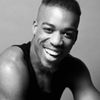It genuinely really frustrates me that, today, within an entire high street beauty department, just a handful of products available will cater to those with textured hair. The specifics of what textured hair types need are often overlooked, so I am frustrated that consumers are still misled and unaware of the correct products and hair care for their hair type. People with curly and textured hair are not being shown the love that they so richly deserve.
There is a disappointing lack of choice on supermarket, pharmacy and department store shelves; and I find it offensive and ignorant, that they label the sections for these products as 'black haircare' or 'ethnic'. Doing this alienates a large majority of people, the shops' own customers! It's totally narrow minded - people from all walks of life, all countries, can and do have big, textured and curly hair.
With curly being the dominant gene type, more and more consumers - women, men and kids of all backgrounds will be looking to the hair care industry for guidance, inspiration, education and products tailored to help them embrace their natural genetic gift. For so long, people with textured hair have felt a need to suppress their natural curl pattern. A part of this is a fear of not being able to confidently manage their hair at home. Women have felt the need to use chemical straighteners for decades, so a lot of knowledge between generations has been lost. Many people don't realise that using either too much or too little of a particular product can mean the difference between getting or not getting, the best results. The solution to all of this is education and my goal is to support a generation on every step of their hair journey. Change is down to the individual.
Textured hair does include different types, so it is important that people can find the products and information most relevant to them, quickly and simply. By definition, all hair has some kind of texture. As a category, my definition of 'textured hair' is all types that have a curl pattern, which includes wavy, curly, coily and kinky. My clients, who give me great insight and inspiration, have found the texture typing charts already out there unnecessarily detailed and confusing.
I can't recall a time in my life when I wasn't influenced by textured hair. I am one of five brothers and was raised in a Rastafarian family, surrounded by events like Carnival where textured hair was the norm. It genuinely has always been my passion. I have created a unique and universal visual language for people to identify their hair type, whether that be straight, wavy, curly, coily, kinky or damaged.
It's easy and intuitive, which is a major element of my frustration with the industry - it's not hard if you spend the time and energy actually working with and supporting those with textured hair. I remember when I was eight years old, my mother said I should braid my own hair (not quite the words she used!), tired of me complaining about her doing it.
This turned out to be a life changing moment, as not only did I teach myself how to braid, but I became completely obsessed with it. I went on to learn about twisting and locing and vividly remember rushing home from school to continue my creations using anything tasselled that I could lay my hands on: the fringing on the living room rug, grandmother's beaded curtains, the kitchen mop... everything. I drove everyone crazy.
I have made it my mission to empower women, men and kids with textured hair, with the techniques, products and practices that maximise the potential of their incredible genetic gift. I also want to help change the minds of those who didn't believe that these consumers need as much guidance, if not more, than those with straight hair.
